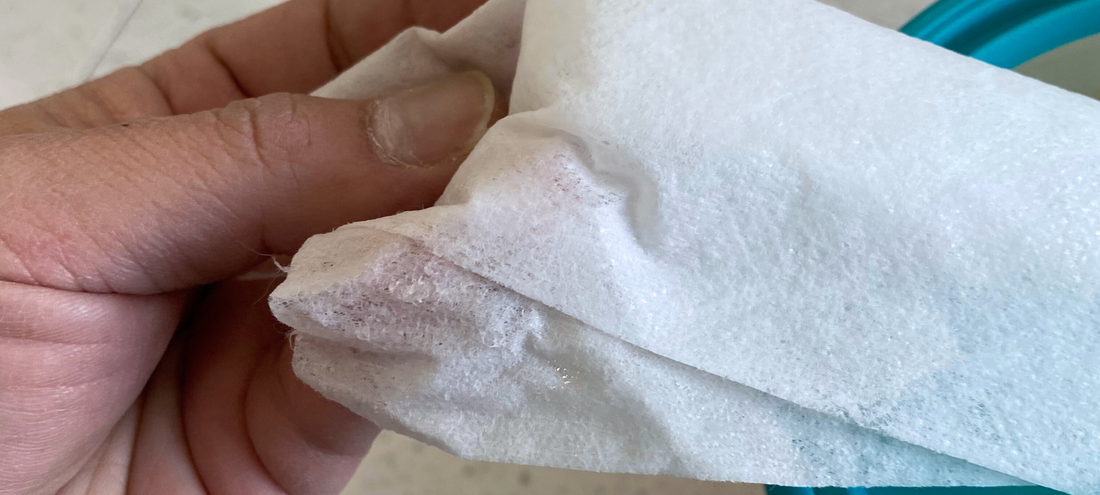When it comes to cleaning wipes, the truth is simple: not all are created equal. In professional environments like healthcare facilities, dental offices, schools, and industrial spaces, quality isn’t just a bonus—it’s the baseline. So how do you separate high-performing wipes from the ones just along for the ride?
Let’s break down what makes a wipe actually worth using—and what to look for the next time you’re restocking your shelves.
1. Is the Wipe EPA-Registered? That’s Not Optional.
The most important line on a disinfecting wipe label? The EPA registration number.
An EPA registration number means the product has been reviewed and approved by the U.S. Environmental Protection Agency to ensure it effectively kills specific bacteria, viruses, and other pathogens when used as directed. Without it, you're basically guessing whether that wipe does anything beyond move dirt around.
✔️ SONO Disinfecting Wipes are EPA-registered and tested against a wide range of viruses and bacteria commonly found in professional spaces.
Quick Tip: Look for "EPA Reg. No." on the packaging. If it’s not there, the disinfecting claims are likely unverified.
2. Check the Kill Claims: Is It Broad Spectrum?
EPA registration is just the beginning. You also need to know what the wipe kills—and how fast.
High-quality disinfecting wipes will include a kill list of organisms they’re proven to eliminate, plus the dwell time (how long the surface must stay wet). In busy facilities, a long dwell time can be a dealbreaker. If the surface dries before the dwell time is up, the disinfecting process fails.
Look for:
-
Broad-spectrum efficacy (against viruses, bacteria, fungi)
-
Fast dwell times (ideally under 5 minutes)
-
No residue (for sensitive electronics and materials)
3. Ingredient Quality Matters—Especially for Daily Use
If your team uses wipes multiple times a day, low-quality ingredients become a real liability.
Avoid:
-
Bleach – Corrosive to metals, can cause respiratory irritation.
-
Ammonia – Harsh and often incompatible with common surface materials.
-
High-concentration alcohols – Drying, flammable, and can degrade plastics or coatings.
Instead, choose wipes that use alcohol-free, quaternary ammonium-based formulas designed to be both tough on germs and gentle on equipment.
SONO Disinfecting Wipes are formulated to clean sensitive surfaces—like touchscreens, patient monitors, and stainless steel—without cracking or discoloration.
Need more info? Our blog “Can Disinfecting Wipes Damage Your Equipment?” explores this in detail.
4. Poor-Quality Wipes Cost You More Than You Think
Cheaper wipes might look good on a budget spreadsheet—but when they require double the effort or damage your equipment, you’ll pay the price.
Low-quality wipes often:
-
Dry out fast (especially in tubs with poor seals)
-
Shred or tear mid-clean
-
Leave streaks or sticky residue
-
Require longer dwell times (wasting your staff’s time)
Over time, this leads to:
-
Damaged devices and surfaces
-
More frequent wipe usage
-
Increased labor costs
-
Higher long-term spend on supplies
In contrast, premium wipes like SONO’s are designed for durability, consistent saturation, and safe use on a wide range of surfaces—meaning less waste and better outcomes.
5. What to Look For on the Label Before You Buy Again
Use this checklist before your next purchase:
✅ EPA Reg. No. clearly listed
✅ Broad-spectrum disinfectant claims
✅ Reasonable dwell times (under 5 minutes)
✅ Alcohol-free, bleach-free formulation
✅ Compatibility with sensitive equipment
✅ Durable material that won’t shred or dry out
Final Word: If You’re Cleaning With It, You Should Trust It
In critical environments, a low-quality wipe is more than an inconvenience—it’s a liability. Take the guesswork out of cleaning by using professional-grade, tested, and reliable products.
Learn more about how we manufacture our SONO Disinfecting Wipes with transparency and care right here in the U.S. For a deep dive on ingredient safety, check out What to Avoid in Cleaning Wipes.
Need help building your facility’s wipe strategy?
Reach out to SONO Supplies for customized recommendations based on your cleaning protocols, equipment needs, and space type.
Because when it comes to safety and hygiene, shortcuts just don’t cut it.

